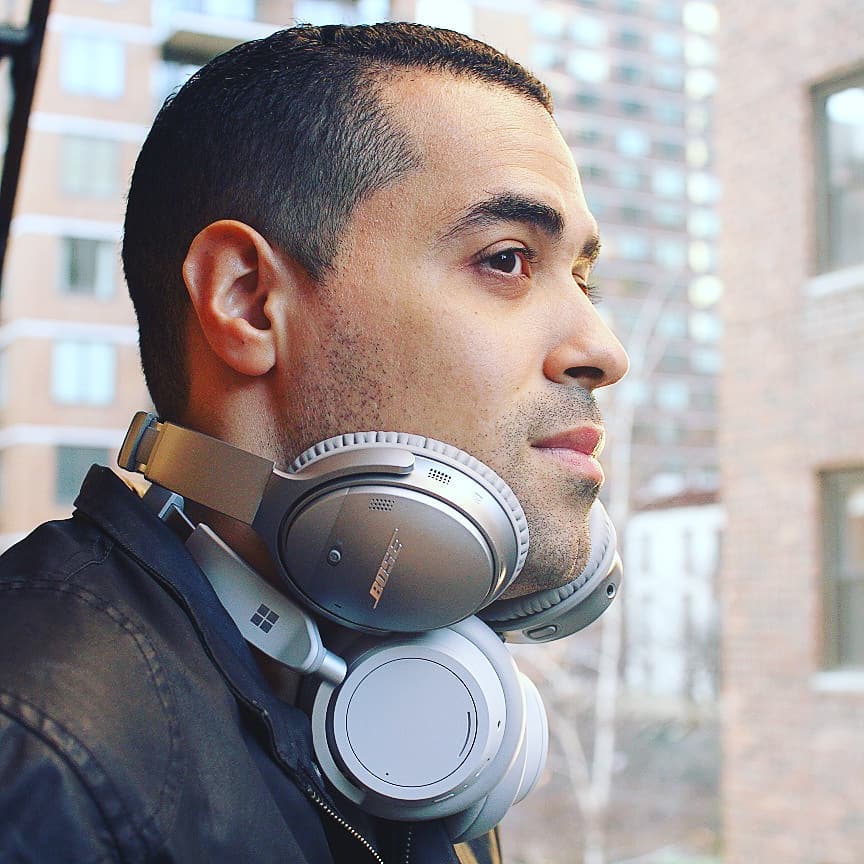Bowers & Wilkins PI7 vs. Bose QuietComfort Earbuds: Which wireless earbuds should you buy?
We've tested and compared the Bowers & Wilkins PI7 and Bose QuietComfort Earbuds to see which is the better pair of noise-cancelling earbuds
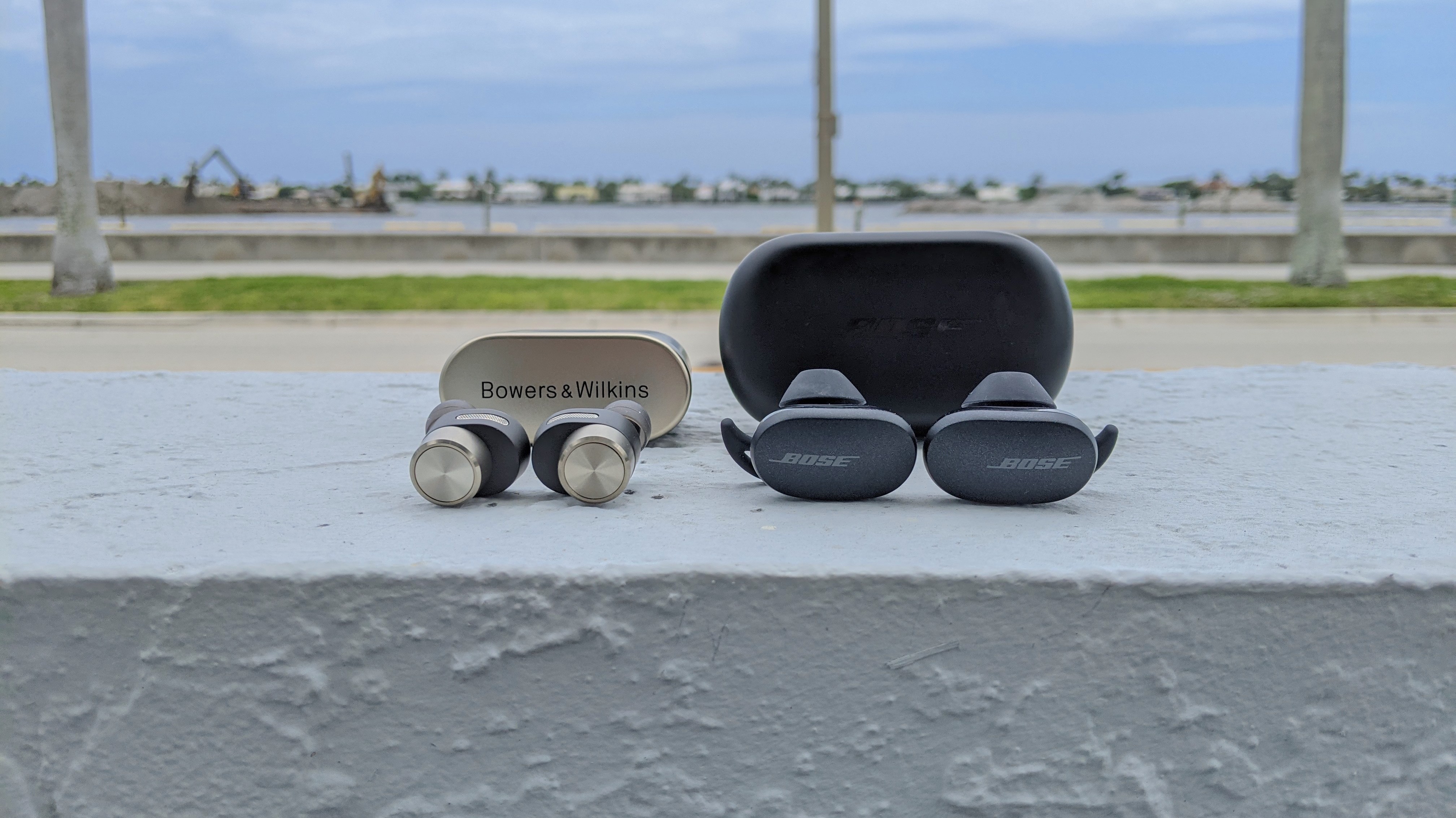
This Bowers & Wilkins PI7 vs. Bose QuietComfort Earbuds comparison breaks down two of the market’s best noise-cancelling earbuds, helping you decide which model best suits your needs and budget.
The Bowers & Wilkins PI7 is the latest big release in the true wireless category that blends class-leading sound and robust active noise cancellation into a super-luxe design, which is also dust- and water-resistant. These buds come with some powerful audio specs, from Dual Hybrid Drive units with individual amplifiers to aptX Adaptive codec support. In addition, they come with a multipurpose charging case that doubles as a wireless adapter (more on that later).
- The best wireless earbuds you can buy
- More of the best cheap wireless earbuds
- Bowers & Wilkins PI7 vs. AirPods Pro: Which is best?
A top seller with best-in-class ANC and call quality, the Bose QuietComfort Earbuds serve as the true wireless alternative to the Bose 700: one of the best over-ear headphones. Minimalist in look, yet silently effective in performance, Bose’s noise neutralization technology performs at the highest level. These buds also come with satisfying sound and personalized features via companion app.
We tested both high-priced offerings to compare every major category and determine the real king of true wireless noise cancellation. Read on to see whether the PI7 or QuietComfort Earbuds make for the better splurge.
Bowers & Wilkins PI7 vs. Bose QuietComfort Earbuds: Specs compared
| Header Cell - Column 0 | Bowers & Wilkins PI7 | Bose QuietComfort Earbuds |
|---|---|---|
| Price | $399 | $279 |
| Wireless Charging Case | Yes | Yes |
| Chip | Qualcomm | Qualcomm |
| Battery Life (Rated) | 4 hours (ANC on), 20 hours (with charging case) | 6 hours, 18 hours (with charging case) |
| Water Resistance | IP54 | IPX4 |
| Case Size | 2.3 x 1.1 x 2.2 inches | 3.5 x 2 x 1.3 inches |
| Case Weight | 2.1 ounces | 2.7 ounces |
| Special features | Adaptive active noise cancellation, adjustable ambient listening mode, aptX Adaptive support, Soundscapes, wireless adapter functionality | Adjustable active noise cancellation, Active EQ technology, Transparency Mode, Bluetooth 5.1, Self Voice calling mode |
Bowers & Wilkins PI7 vs. Bose QuietComfort Earbuds: Price
Many find the AirPods Pro ($249) to be expensive, so to see the PI7 ($399) and QuietComfort Earbuds ($279) cost even more will likely be offputting. One can argue that they are overpriced, though their level of performance and ANC technologies say otherwise.
Nonetheless, the QuietComfort Earbuds are much more affordable, which is saying a lot. It’s also likely that Bose will discount them heading into the holidays as the company has done with the Bose 700. The odds of B&W marking down the PI7 any time soon are slim to none.
For all of the latest Bose and B&W deals, we recommend bookmarking our best headphones deals pages.
Get instant access to breaking news, the hottest reviews, great deals and helpful tips.
Winner: Bose QuietComfort Earbuds
Bowers & Wilkins PI7 vs. Bose QuietComfort Earbuds: Design
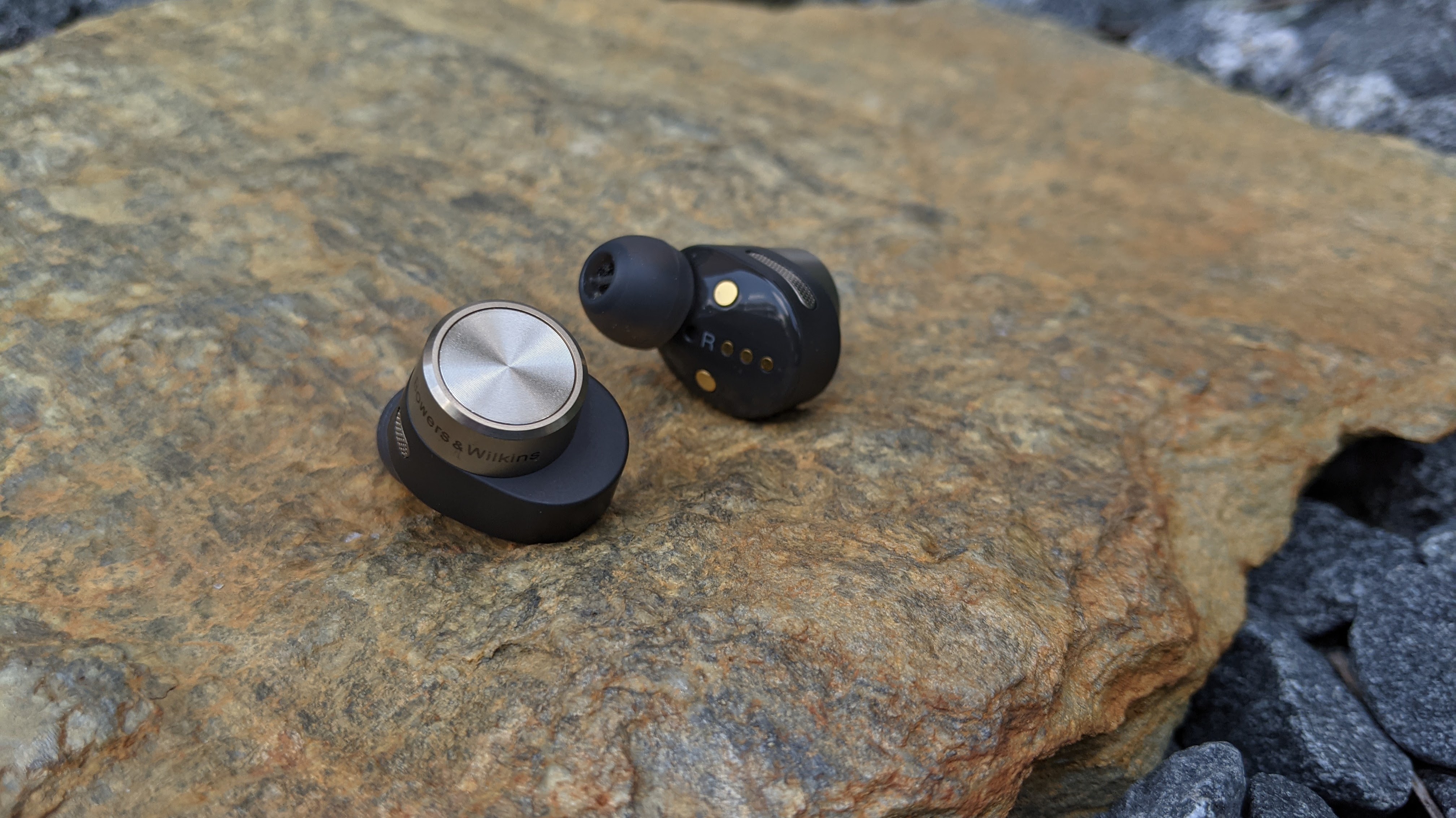
Take appearance and form into consideration and tell us which is more attractive? Come on, it’s clearly the PI7. B&W’s reputation for crafting premium audio hardware remains intact, as the brand’s flagship buds feel as good in hand as they look worn on your ears. Build quality ranks high with matte plastic and aluminum making up their entire composition. Details like the protruding metal cylinder, which resembles a dial, and the laser-etched logo around it are nice touches. An IP54 rating means you’re protected from light splashes, rain, sweat and even dirt ingress.
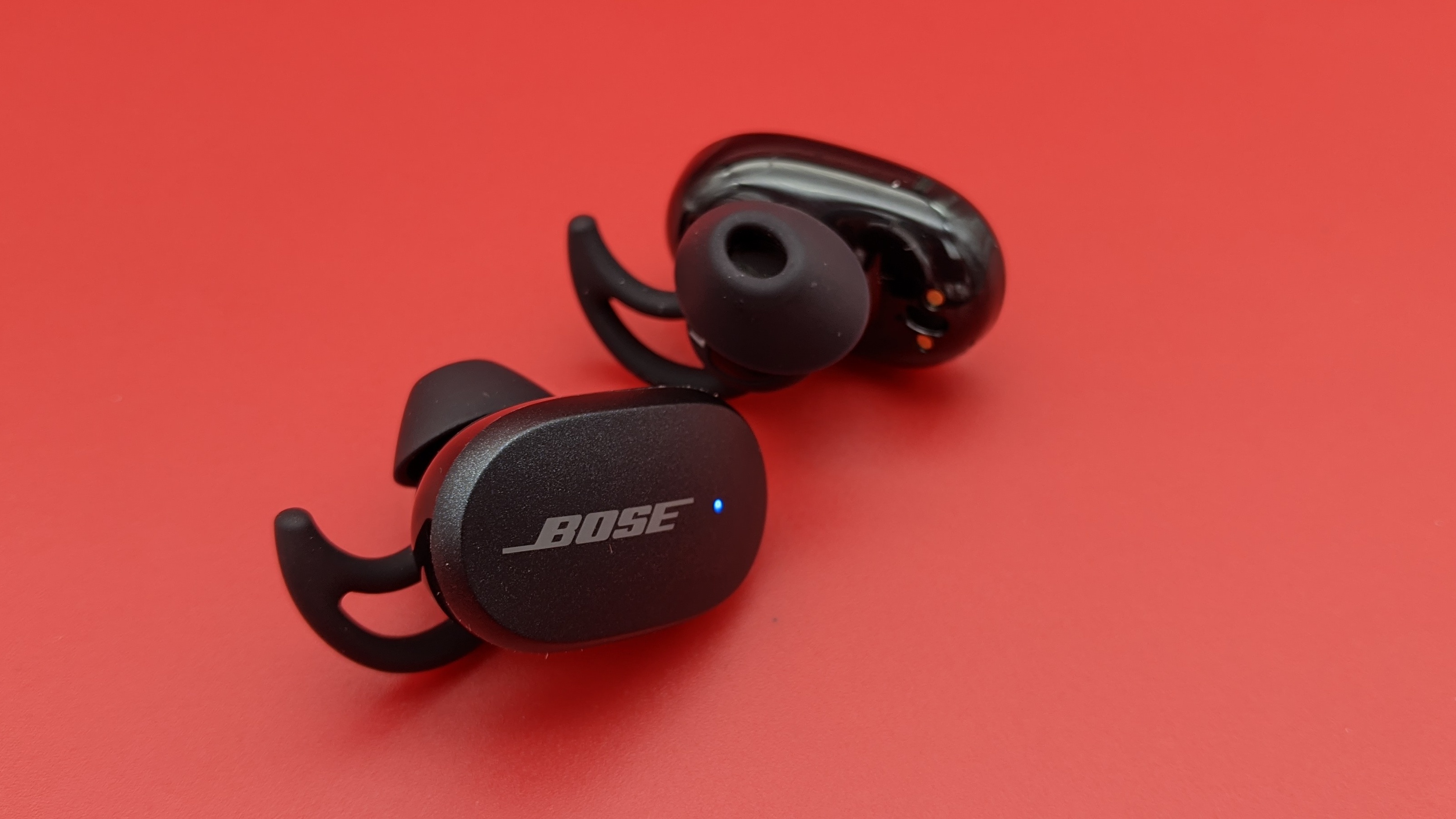
Bose set a standard for ultramodern designs on headphones with the 700. We knew this wouldn’t likely be the case with the QuietComfort Earbuds, but the final product simply lacks ingenuity, as exemplified by the bland look and wide shape. The durable shell and IPX4 water resistance are the design’s only appealing attributes. Bose chose function over fashion, making the entire front one long touchpad, while integrating a black IR sensor into the sound port and placing mics at the bottom of the casing. All of these moves assist with performance, though obviously, they came at the cost of style.
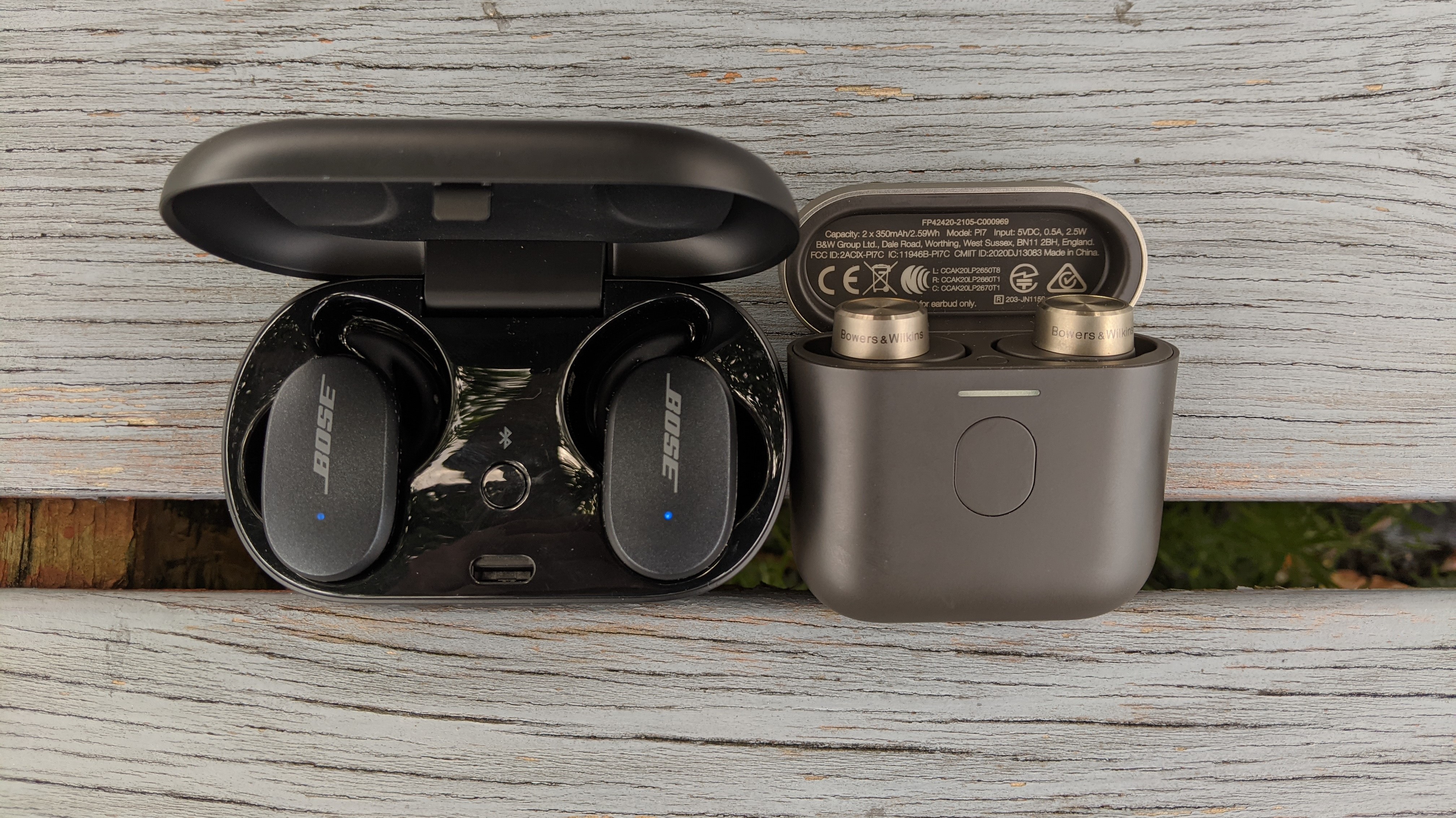
Each model is bundled with a large, pocket-stuffing charging case. However, the PI7’s case is lighter, flashier, more portable friendly, and supports more functionality with B&W claiming the front button will serve a future function; expect this to come in a firmware update. The QuietComfort Earbuds’ case is huge and weighs down your pockets, though it shares similar durability to the earbuds and has a Bluetooth button for manually pairing, just like the PI7.
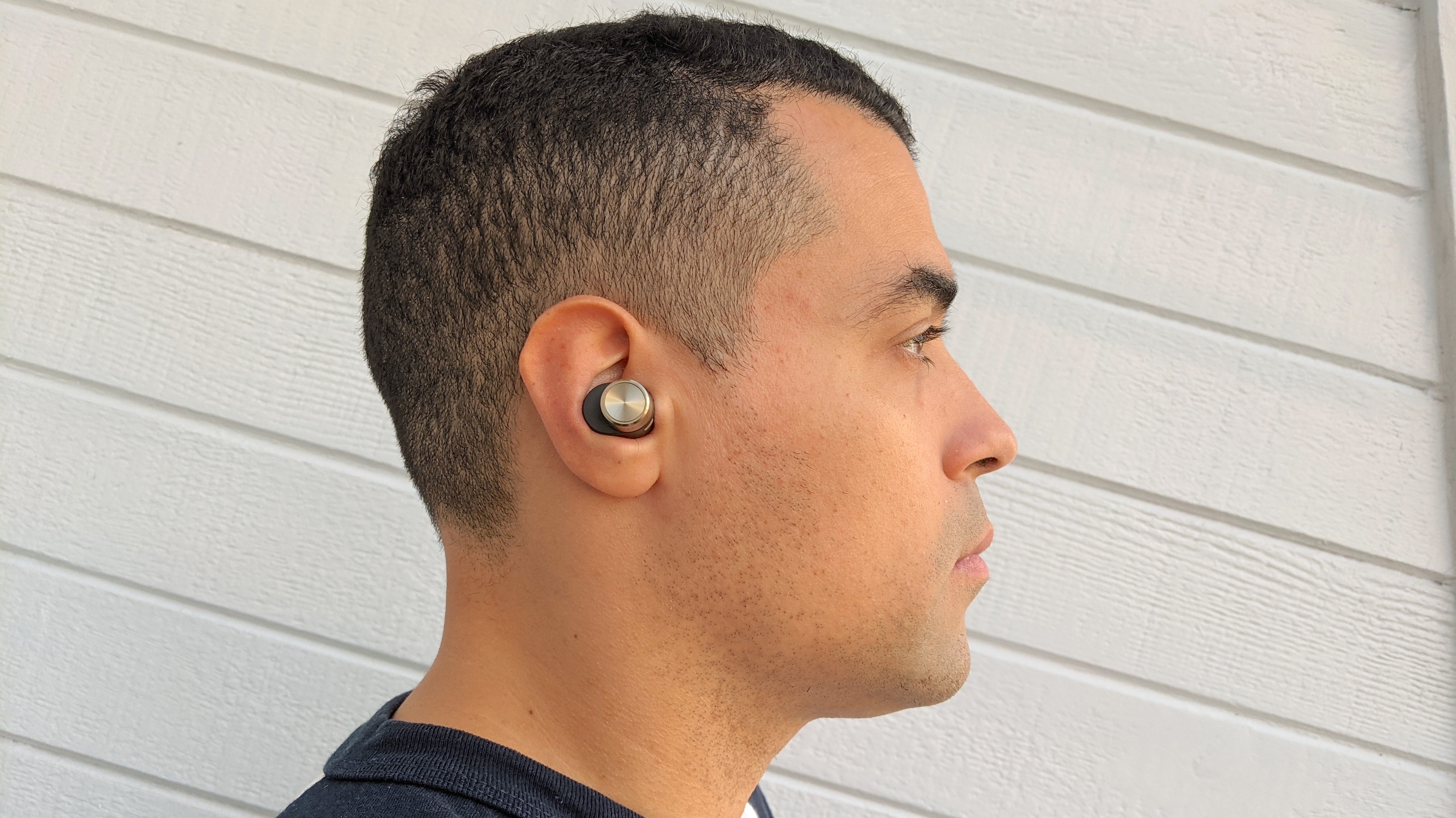
The PI7 isn’t just the better-looking model, but also the better fitting of the two. You should be fine wearing it for an hour or two before experiencing some soreness around the front of your ears; the elongated sound port does pinch the tragus. At least the tips provide a tight seal for decent isolation and moderate stability.
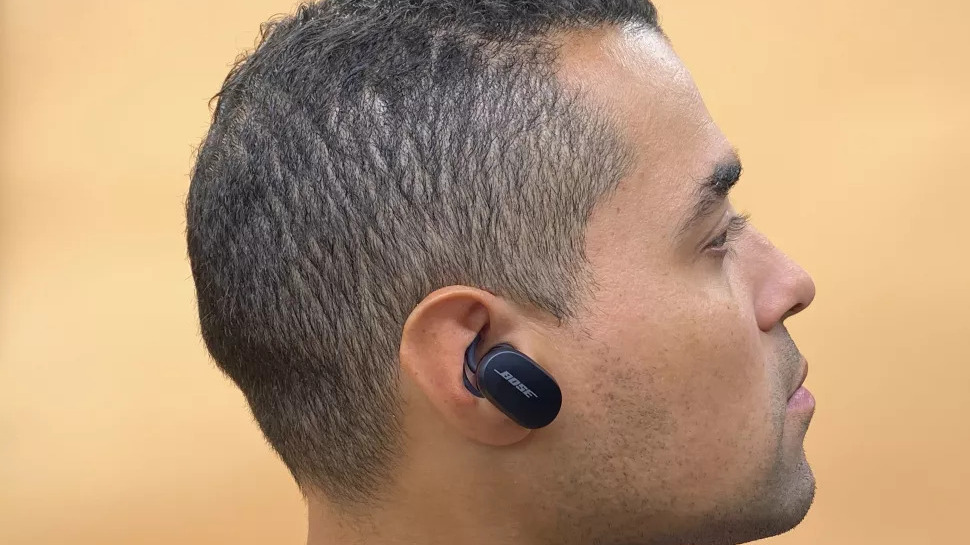
Bose’s StayHear Max silicone ear tips and fins are supposed to optimize fit, but don’t exactly live up to that promise, as the extra weight causes the QuietComfort Earbuds to slip out when moving fast on commutes. The IR sensors apply unwanted pressure to the concha as well.
Winner: Bowers & Wilkins PI7
Bowers & Wilkins PI7 vs. Bose QuietComfort Earbuds: Controls
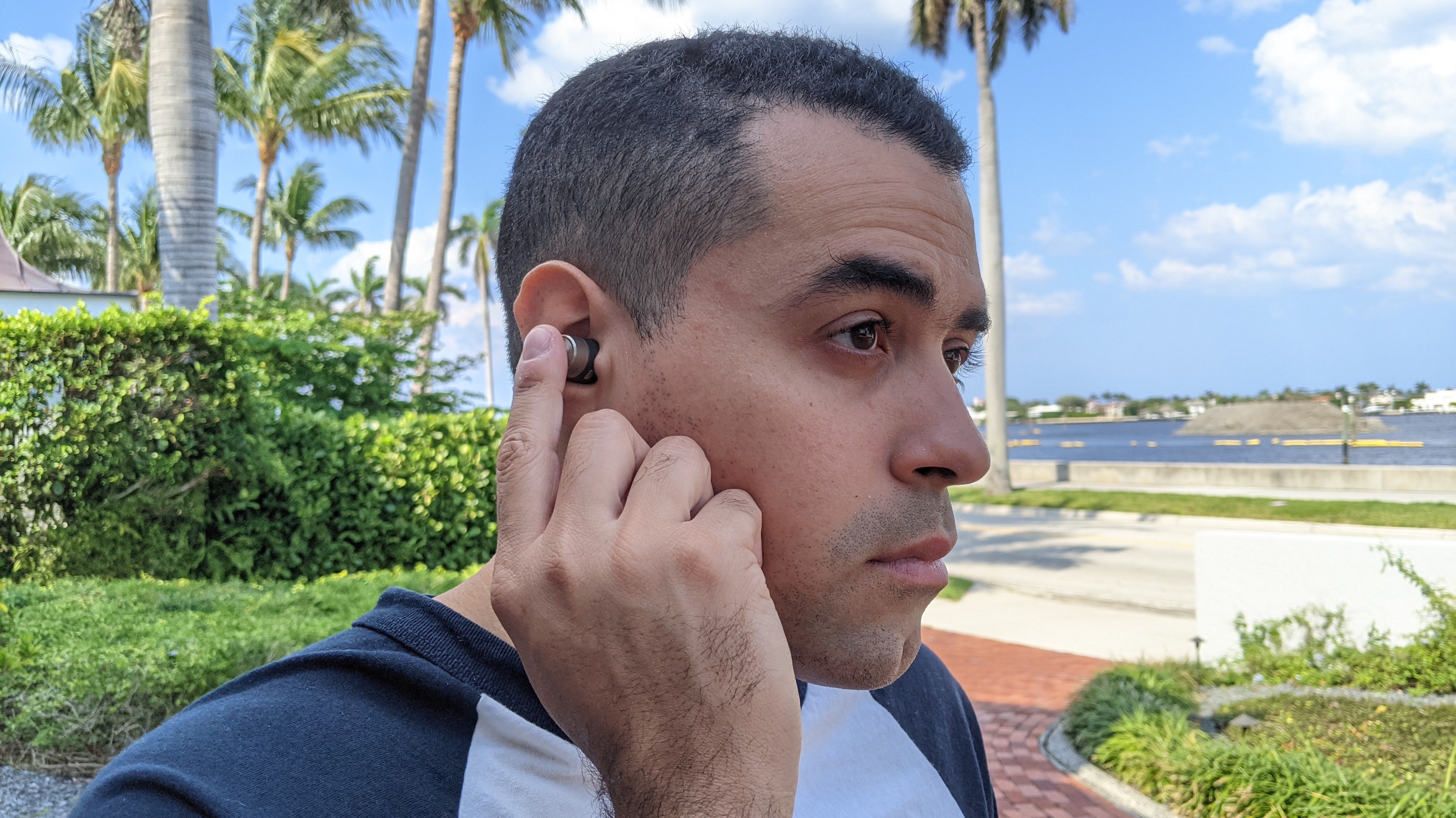
The touch controls, on-ear detection, and voice assistance are equally great on these two sets of buds. Some will favor the PI7 for its extensive input methods, while others will find the QuietComfort Earbuds more serviceable with unique controls like on-board volume. Either way, you’re getting reliable operation from either product.
B&W programmed the PI7 with several functions that can be enabled through single, double, and triple taps and long press gestures. The touch panels are compliant with each input method; we love the option of cycling through favorited ANC settings. Also, the motion sensors are spot-on and automatically pause music when removing the buds. Voice assistance is where the PI7’s controls excel most with B&W’s six-mic array adept at picking up vocals, while Siri and Google Assistant execute voice commands with ease.
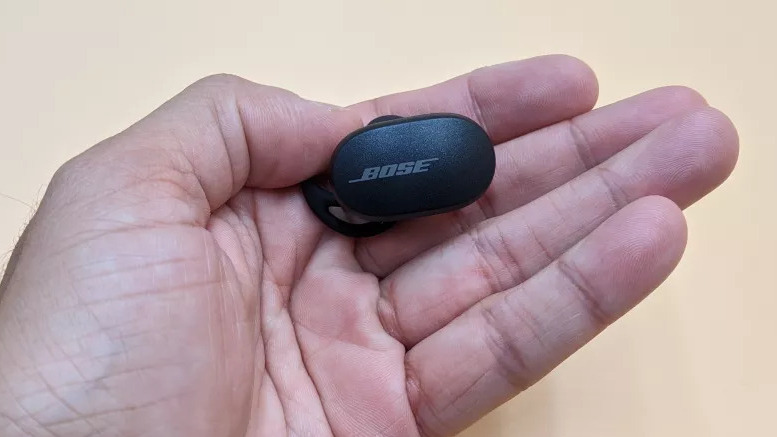
Despite only supporting double taps and long presses, the QuietComfort Earbuds are highly functional for playback, call management, and voice assistance, the latter being remarkable. The addition of volume controls via software update makes a huge difference, and we noticed the touch panels also accept swipes as an input method, which is more effective for activating certain functions. On-ear detection has also been improved and works better than it did at launch. However, the QuietComfort’s unsung hero is its incredibly powerful mic array that makes using the digital assistant an absolute blast. It demonstrates the best speech recognition of any model in its class, plus Siri and Google Assistant dish out results as quickly as they receive them.
Winner: Draw
Bowers & Wilkins PI7 vs. Bose QuietComfort Earbuds: Sound quality
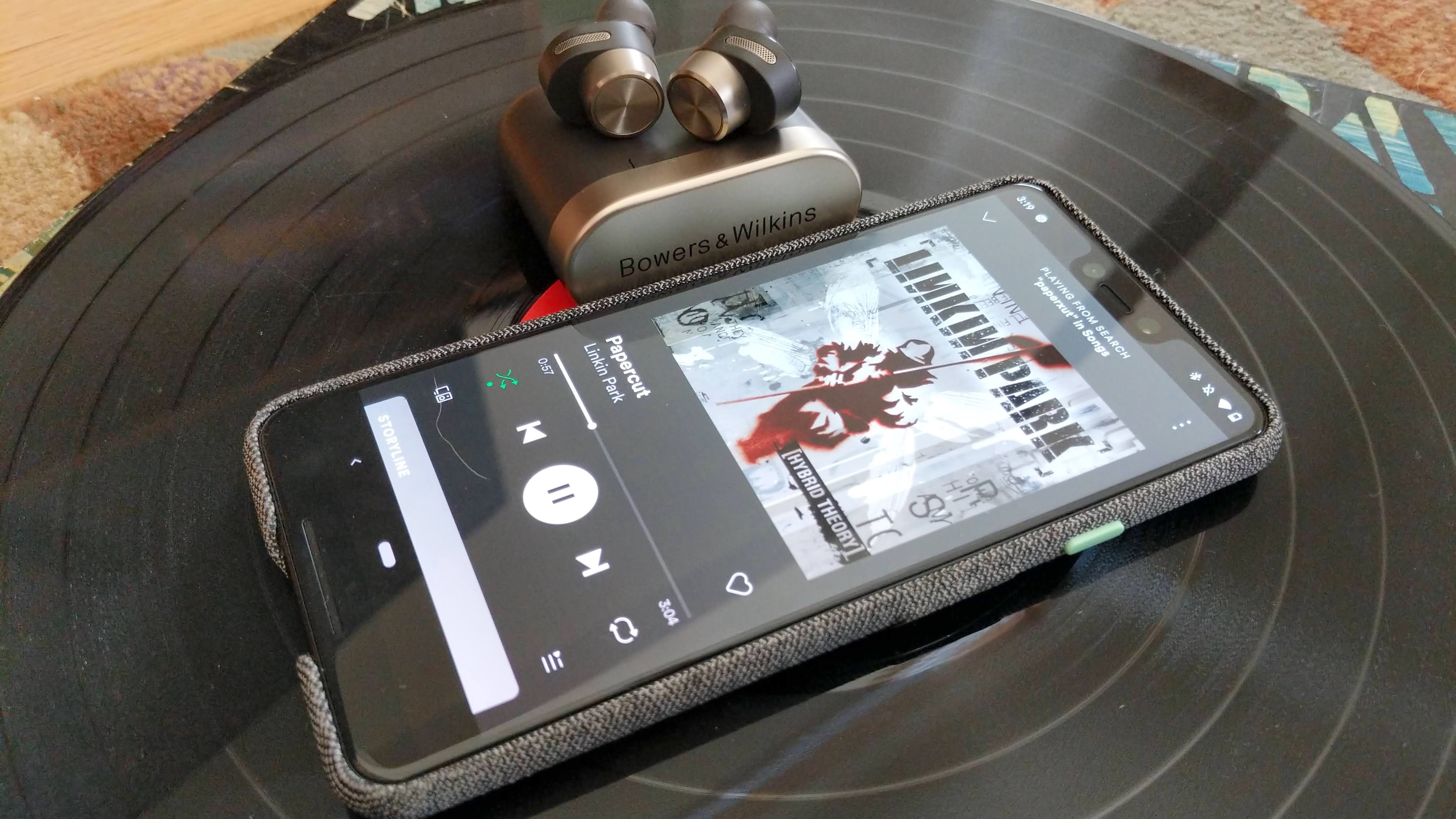
Sound is a staple for B&W the same way noise cancellation is for Bose, and the PI7 is quite the sonic stunner. The combination of Dual Hybrid Drive units with individual amplifiers for each driver, along with 24-bit sound and aptX Adaptive codec support places these fancy buds in audiophile territory, which shows when streaming music on hi-res platforms like Qobuz and Tidal. Lows are emphatic and blend superbly with crisp mids and highs for well-rounded and detailed sound. The PI7 can handle complex recordings as well, revealing subtle nuances you won’t hear on the QuietComfort Earbuds or several other competitors.
But what gives the PI7 an audio edge over the QuietComfort Earbuds is its charging case. B&W figured out a way to have it double as a wireless adapter that can retransmit audio to the buds when plugged into any compatible audio jack. Even better is that it can stream music in aptX. That’s crazy.

We still can’t believe that Bose engineered the QuietComfort Earbuds with a frequency curve similar to the Bose 700, and though you get pleasant audio performance, it doesn’t compare to B&W’s sound signature. Bose’s Active EQ technology and proprietary drivers deliver plenty of detail and crisp mids. The buds could benefit from higher volume, which would also give bass a nice boost.
Winner: Bowers & Wilkins PI7
Bowers & Wilkins PI7 vs. Bose QuietComfort Earbuds: Active noise cancellation
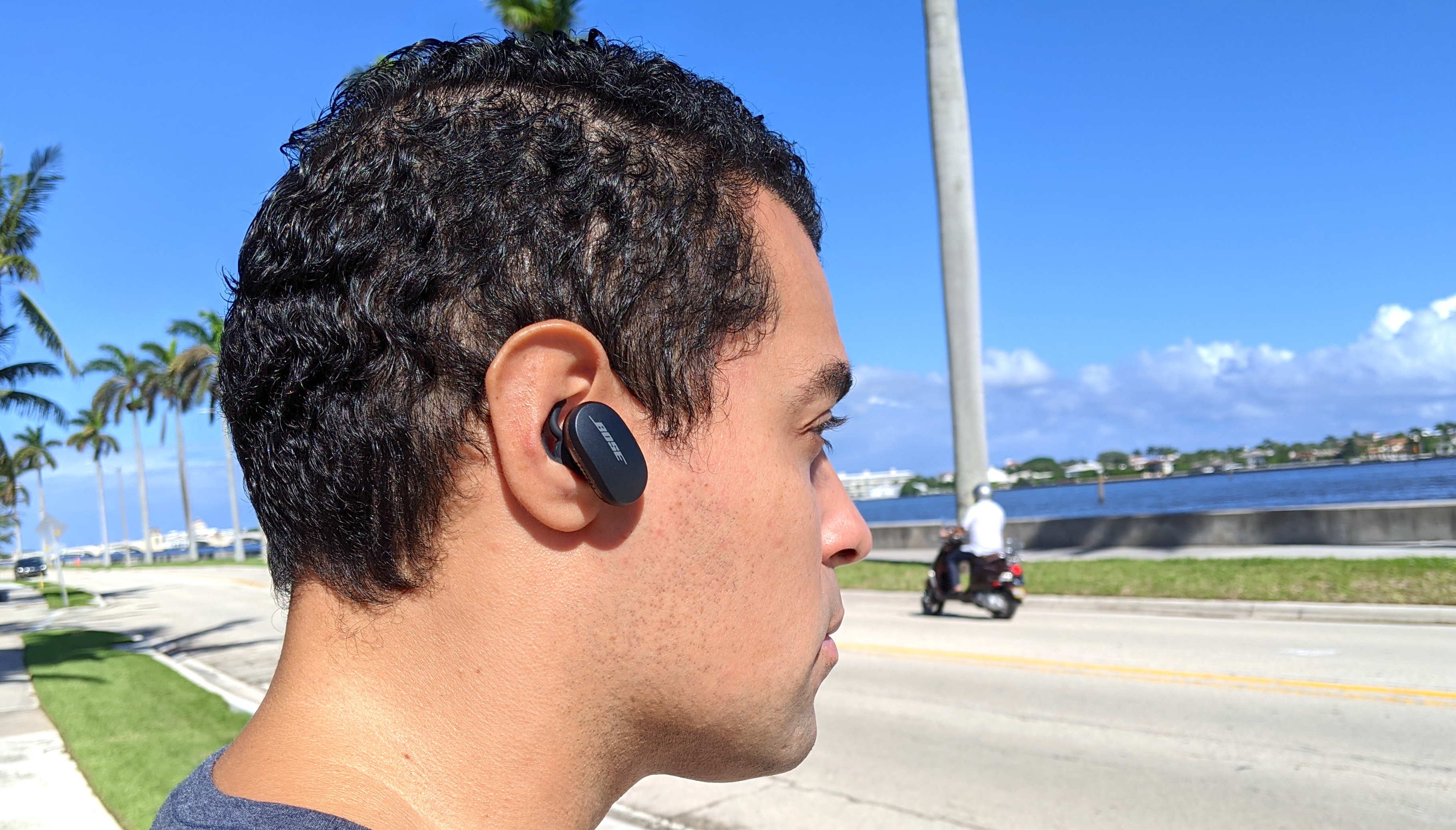
When it comes to ANC, the PI7 is the most impressive true wireless option yet and the QuietComfort Earbuds’ greatest threat, but it still falls short of dethroning the king. The fact that Bose managed to give its buds nearly the same noise cancellation as its over-ear sibling and up to 10 adjustable ANC levels is almost mind-blowing.
Selecting the max level blocks out close to 90% of ambient noise and adjusting ANC to the mid-level mark still gets you better performance than most other sub-luxury models. Disturbances like doorbells, kitchen appliances, and loud conversations will be completed muted, along with most traffic noises and wind. Is Bose’s ANC technology powerful enough to block out blaring sounds like crying babies and police sirens? No, but it does the best job of minimizing them.

The PI7 has three mics on each bud that work to keep most noises from entering the soundscape. This is good enough to put a kibosh on any commotion taking place in your living room, as well as rowdy pedestrians and the humming noise from centralized AC units. Wind resistance is also strong to eliminate the annoying whooshing effect produced in drafty conditions. Some noises like baby cries and construction tools will be heard, though neither comes off harmful or distracting. An Auto Mode is available in the app that automatically adjusts ANC by examining the noise around you, though we found it less effective than the manual ANC.
A transparency mode is programmed into both models and share something in common: they blend with noise cancellation to make ambient noises more distinguishable and less harsh on your ears. You will hear external sounds clearly on the PI7, but the QuietComfort Earbuds is flawless in action, to the point that you can pick up conversations from across the street.
Winner: Bose QuietComfort Earbuds
Bowers & Wilkins PI7 vs. Bose QuietComfort Earbuds: Special features and apps
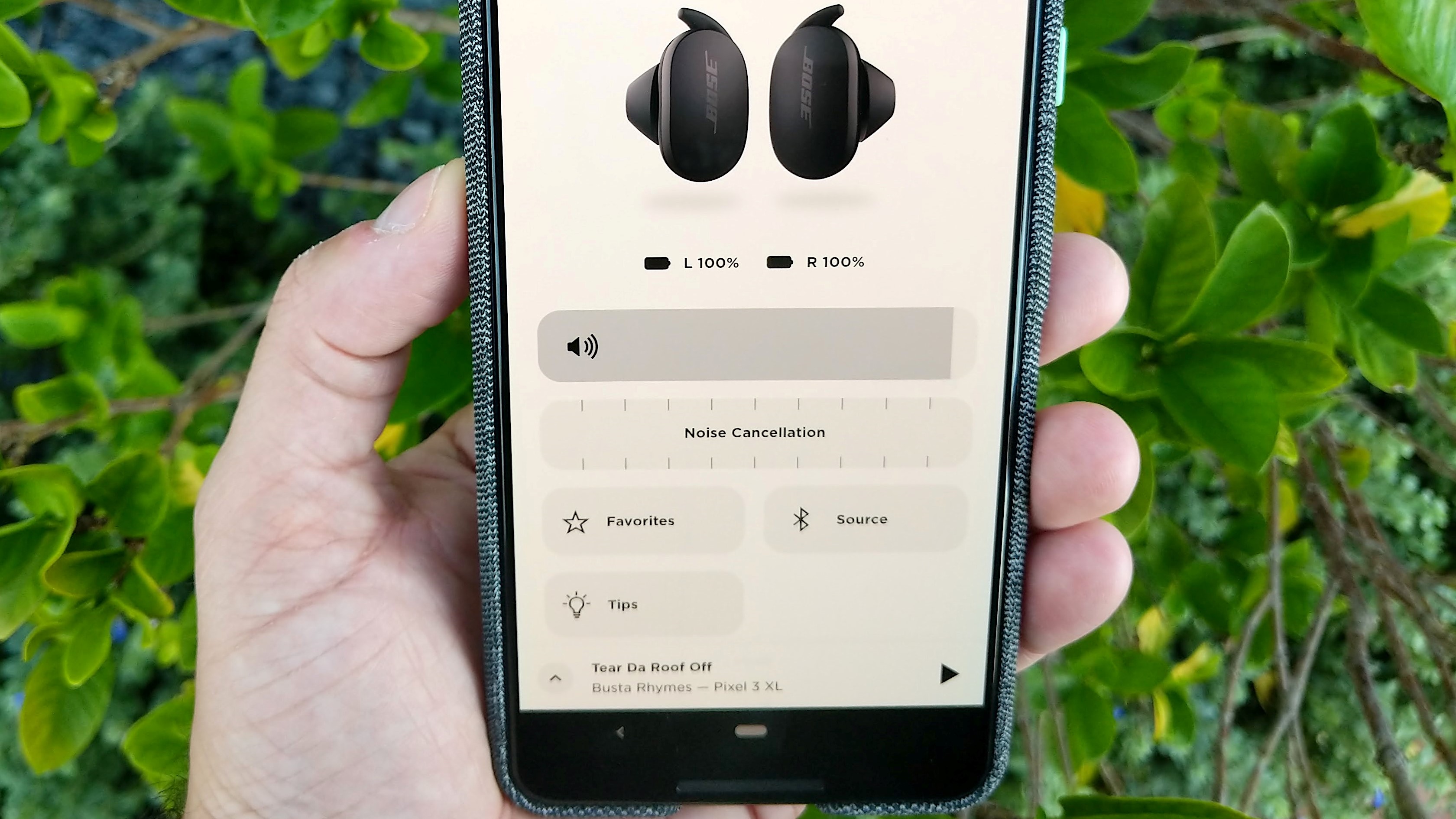
The PI7 and QuietComfort Earbuds aren’t loaded with features, though they are equally serviceable for personalizing the user experience. Each comes with their own companion app that has battery level indicators, toggle controls, firmware updates, and one or two unique features worth checking out.
The B&W app doesn’t have much going for it besides a slider to adjust transparency levels and a Soundscapes mode that masks the noise around you with nature sounds; this is actually a great stress-relieving tool. That’s about it. Also, there seem to be some features missing (Standby Timer, voice prompts) from the app that are exclusive to the Bowers & Wilkins PX7.
It turns out the PI7’s biggest feature (aside from ANC) comes outside of the app, that being the aforementioned charging case. Again, you can plug it into any compatible analog audio output (like that of an airplane jack, smartphone or laptop).
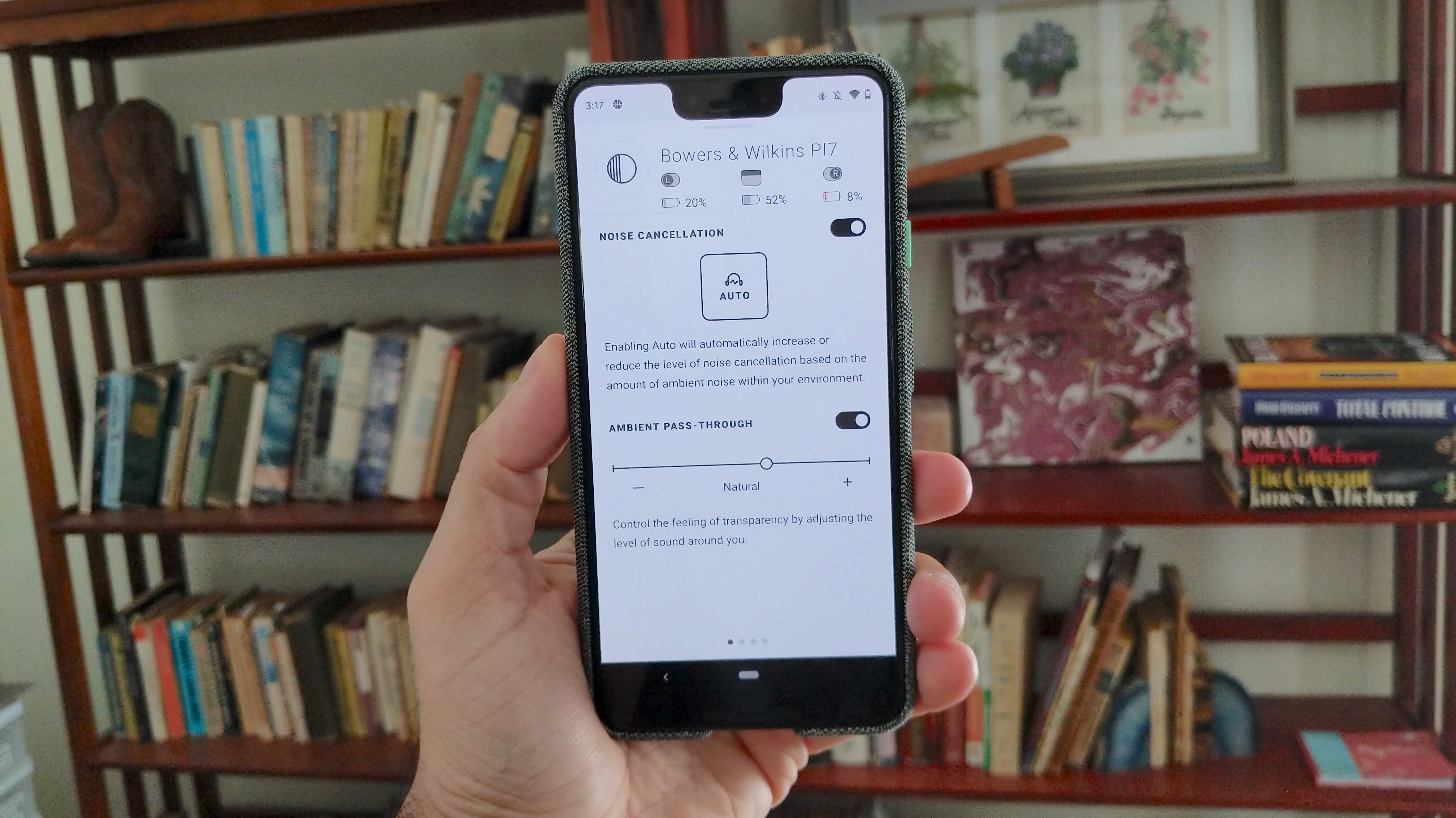
As for the Bose Music app, there is a Self Voice mode to let you hear yourself louder on phone calls, which helps when taking calls in loud settings. The latest firmware update allows users to control noise cancellation and activate transparency mode with their voice, though this feature is only available to Xiaowei voice assistant users in China. Bose also kept some features exclusive to the 700, those being an adjustable EQ and Auto-Off option to put the buds in sleep mode.
Bose makes up for its lack of extended functionality by blessing the QuietComfort Earbuds with Bluetooth 5.1, resulting in stronger connectivity and steady range (35 feet). The PI7 operates on Bluetooth 5.0, and while it pairs to devices quickly, it has poor range that causes stuttering when past a 15-foot range.
Multipoint technology is MIA on both models.
Winner: Draw
Bowers & Wilkins PI7 vs. Bose QuietComfort Earbuds: Call quality
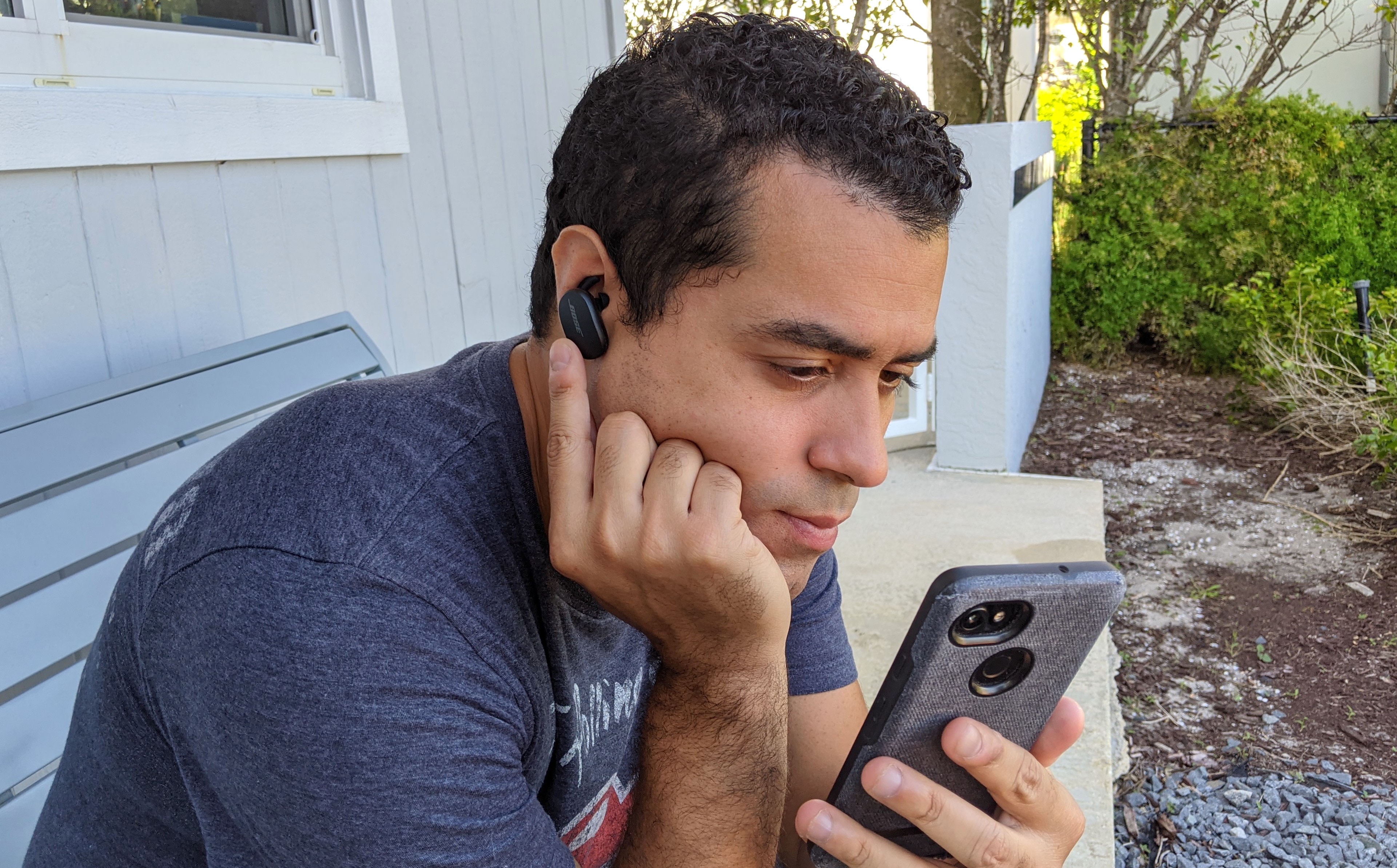
There is only one model that even comes close to the QuietComfort Earbuds’ call quality, and it isn’t the PI7; that honor goes to the AirPods Pro. Bose’s mic array enhances clarity and blocks out external sounds at a level no other pair of wireless earbuds can match. You’ll be able to communicate with others distraction-free, no matter the environment. Any wind or blaring sounds are tamed exceptionally well, causing very little interference during calls.
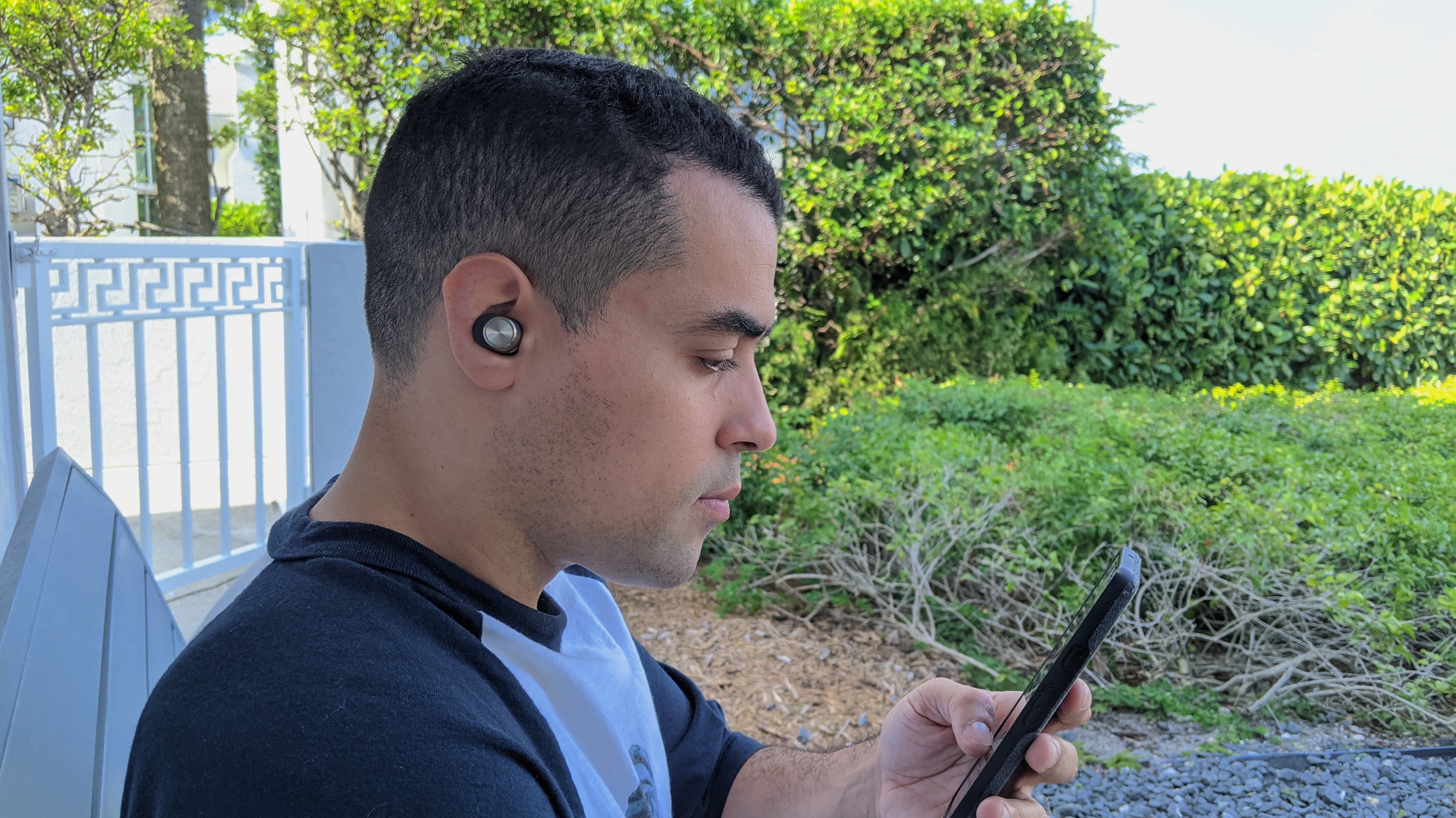
To see the PI7’s mics perform well with ANC and voice assistance and be mediocre for phone calls is disappointing. Volume is also noticeably low on the opposite end. You should be able to engage in brief conversations when chatting in quiet settings, specifically indoors. Outside is where you’ll encounter problems like cutout and crackling, which often occur when taking calls in drafty conditions.
Winner: Bose QuietComfort Earbuds
Bowers & Wilkins PI7 vs. Bose QuietComfort Earbuds: Battery life
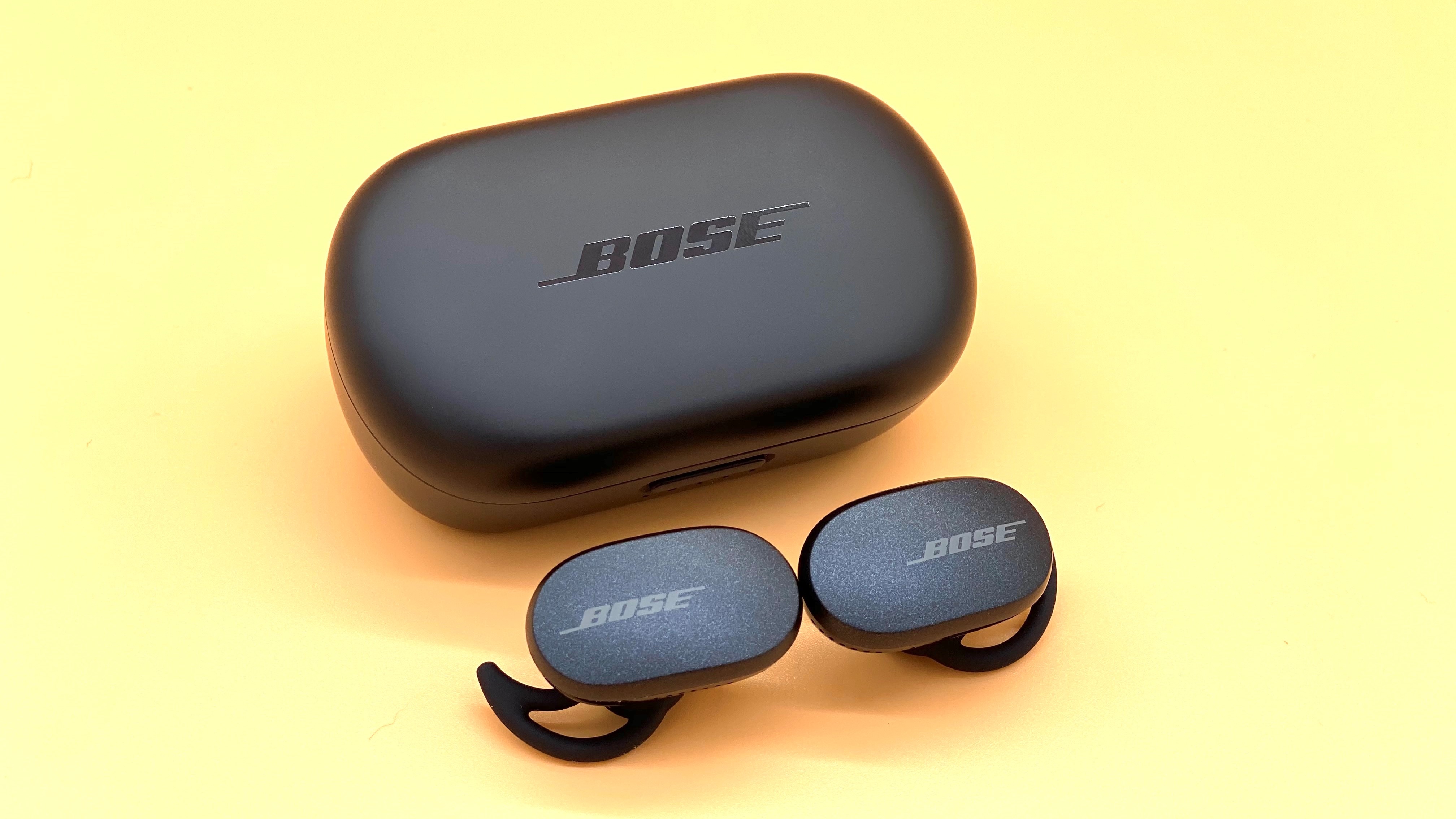
At 6 hours, the QuietComfort Earbuds doesn’t exactly rank high in battery life, but this is sufficient for a bicoastal flight. High volume, streaming, and special features will drop playtimes by about 30 minutes. Disabling both listening modes at the same time would help extend use, but that isn’t an option, as setting noise cancellation to level 0 still places the buds in transparency mode. The charging case won’t get you much playtime either, only holding 18 hours when fully charged.
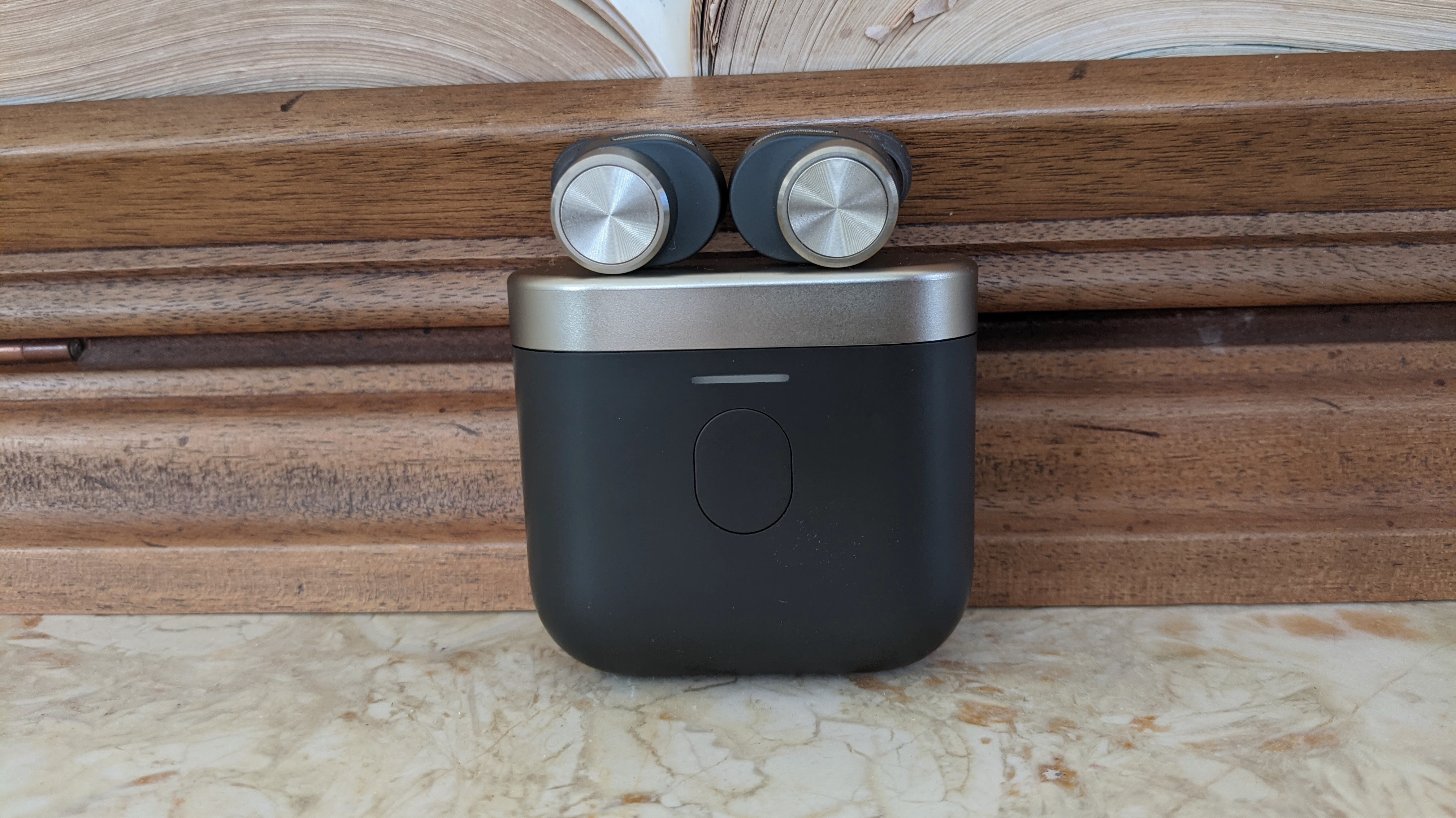
If you think that’s rough, the PI7 is even rougher with 4 hours on a full charge. B&W hasn’t disclosed the playtime with ANC off, but my testing saw the buds last about 30 minutes longer. Keep in mind there is no sleep mode, so you’ll need to toss the buds back in the charging case, which, while slightly higher than its competitor at 20 hours, is still low.
Both models support wireless charging and quick charging, netting you 2 hours of listening time on a 15-minute charge.
Winner: Bose QuietComfort Earbuds
Bowers & Wilkins PI7 vs. Bose QuietComfort Earbuds: Verdict
It’s been a while since we had a face-off determined by such a small margin, but the Bowers & Wilkins PI7 squeezes out the win. Yes, the $399 price tag doesn’t make it the most attainable pair of wireless earbuds, and the low battery life might have you worrying about playtimes on the go. However, those fortunate enough to spend top dollar will be rewarded with grade-A sound, along with some of the finest craftsmanship and noise cancellation in the category.
Other hallmarks such as the charging case’s wireless adapter functionality and lossless audio support demonstrate B&W’s commitment to providing an elite listening experience, even if at a premium.
| Header Cell - Column 0 | Bowers & Wilkins PI7 | Bose QuietComfort Earbuds |
|---|---|---|
| Price and value (5) | 3 | 4 |
| Design (15) | 13 | 9 |
| Controls (10) | 7 | 7 |
| Audio quality (20) | 20 | 17 |
| Active noise cancellation(20) | 18 | 20 |
| Special features and apps (15) | 9 | 9 |
| Call quality (5) | 3 | 5 |
| Battery life (10) | 6 | 7 |
| Total score (100) | 79 | 78 |
The Bose QuietComfort Earbuds are still the best noise-cancelling solution in true wireless form, but they fall short of being the better overall model. That statement doesn’t devalue them. Bose did a phenomenal job of engineering these buds with similar ANC performance, call quality, and sound as the Bose 700; that is a serious feat. Unfortunately, the design is an eye-and-ear-sore, and even if battery life on the buds is higher than the PI7, it’s still low compared to the rest of the market.
- More: We've tested the best computer speakers
A lifestyle journalist with an affinity for consumer products, Alex has over a decade of experience and has worked with popular publications such as Complex, Thrillist, Men’s Health, Gear Patrol, AskMen, and Hoop Magazine. He currently focuses on audio, reviewing the most coveted headphones in the market for both Tom’s Guide and Laptop Magazine.
